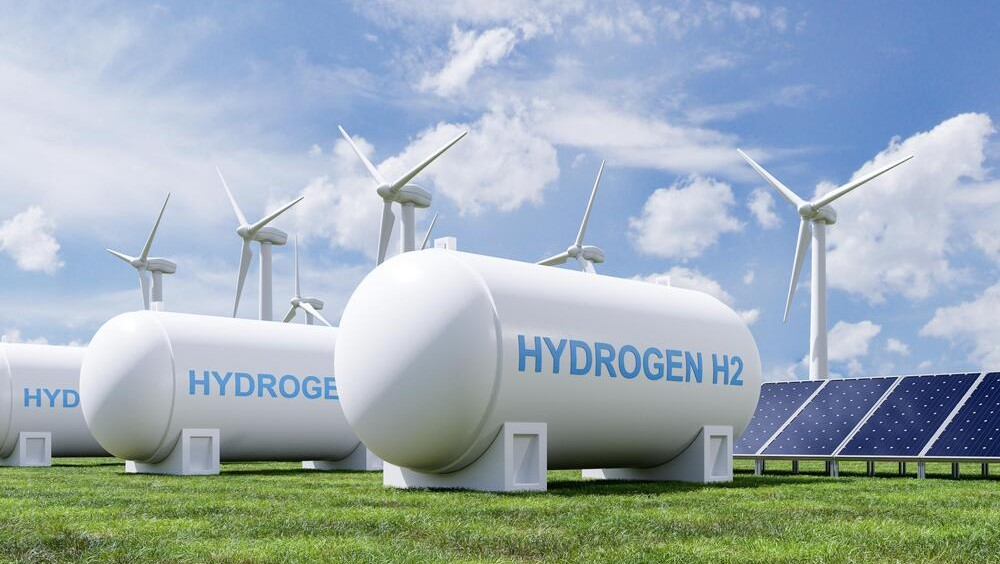Researchers from Korea and USA have developed highly efficient photoanodes that suppress undesirable losses associated with photoelectrochemical water splitting for hydrogen production and enhances the reaction kinetics.
Hydrogen is a promising fuel that can help reduce our dependence on fossil fuels and lower greenhouse gas emissions. It’s a clean-burning energy source that can be used in a variety of applications, from powering vehicles to producing electricity.
Currently, hydrogen is most commonly produced by burning natural gas, a process that leads to massive emissions of greenhouse gases. While it may be cost-effective, it’s not truly sustainable and thus requires a more eco-friendly approach for its generation.
That’s why scientists are exploring other options, like photoelectrochemical (PEC) water splitting based on solar energy to produce hydrogen. But, the widespread application of PEC water splitting has been limited by the lack of efficient photoanodes for catalyzing the important oxygen evolution reaction (OER).
Recently, organometal halide perovskites (OHPs) have emerged as a promising photoanode material for photoelectrochemical water splitting. However, OHP-based photoanodes suffer from two undesired losses, such as the non-radiative recombination of photogenerated carriers and sluggish reaction kinetics of PEC water splitting. These are the main limitations that need to be addressed in order to achieve maximum efficiency for OHP-based photoelectrodes.
To address these challenges, researchers from Korea and USA have developed highly efficient OHP-based photoanodes using a rational design approach that surpasses the undesired losses.
The team was led by Professor Sanghan Lee from Gwangju Institute of Science and Technology, including Associate Professor Jangwon Seo from Korea Advanced Institute of Science and Technology.
Researchers fabricated a novel Fe-doped Ni3S2/Ni foil/OHP photoanode in three steps. First, they synthesized the Fe-doped Ni3S2 catalyst for OER on Ni foil using a hydrothermal method followed by chemical conversion. Next, they constructed the OHP photovoltaic cell consisting of SnO2 electron transport layers (ETLs) through spin coating. Lastly, they combined these two components to obtain the photoanode.
Researchers found that adding glycidyl trimethylammonium chloride (GTMACl) to the anode passivated the defects at the OHP/ETL interface. The defect-passivated electron transport layers effectively suppress the undesired recombination of photogenerated carriers from the OHP layers. Furthermore, Fe-doped Ni3S2 demonstrated high catalytic activity, resulting in a high OER rate at the anode and minimizing the loss of photogenerated carriers within the electrolyte.
The resulting Fe-doped Ni3S2/Ni foil/OHP photoanodes exhibit a remarkable applied bias photon-to-current efficiency of 12.79%. It is the highest of the previously reported OHP-based photoanodes by suppressing undesired losses, according to the researchers.
Tags: Hydrogen, Korea, Research, USA, Water



Recent Posts
Japan Launches Major R&D Project to Advance Shipbuilding with Alternative Fuels
EU Adopts Emissions Standards for Low Carbon Hydrogen to Bolster Clean Energy Market
Trafigura to Implement ZeroNorth’s AI Platform Across Global Fleet
Cochin Shipyard to Construct eCap Marine’s Hydrogen-Fuelled SeaShuttles for Samskip
India Strengthens Hydrogen Economy with Hyundai-IIT Madras Innovation Centre
India Showcases Green Maritime Ambitions at London Investment Meet
Hong Kong Launches Incentive Scheme to Promote Green Maritime Fuel Bunkering
MSC Hosts Sustainability Experience in Antwerp for Global Supply Chain Leaders